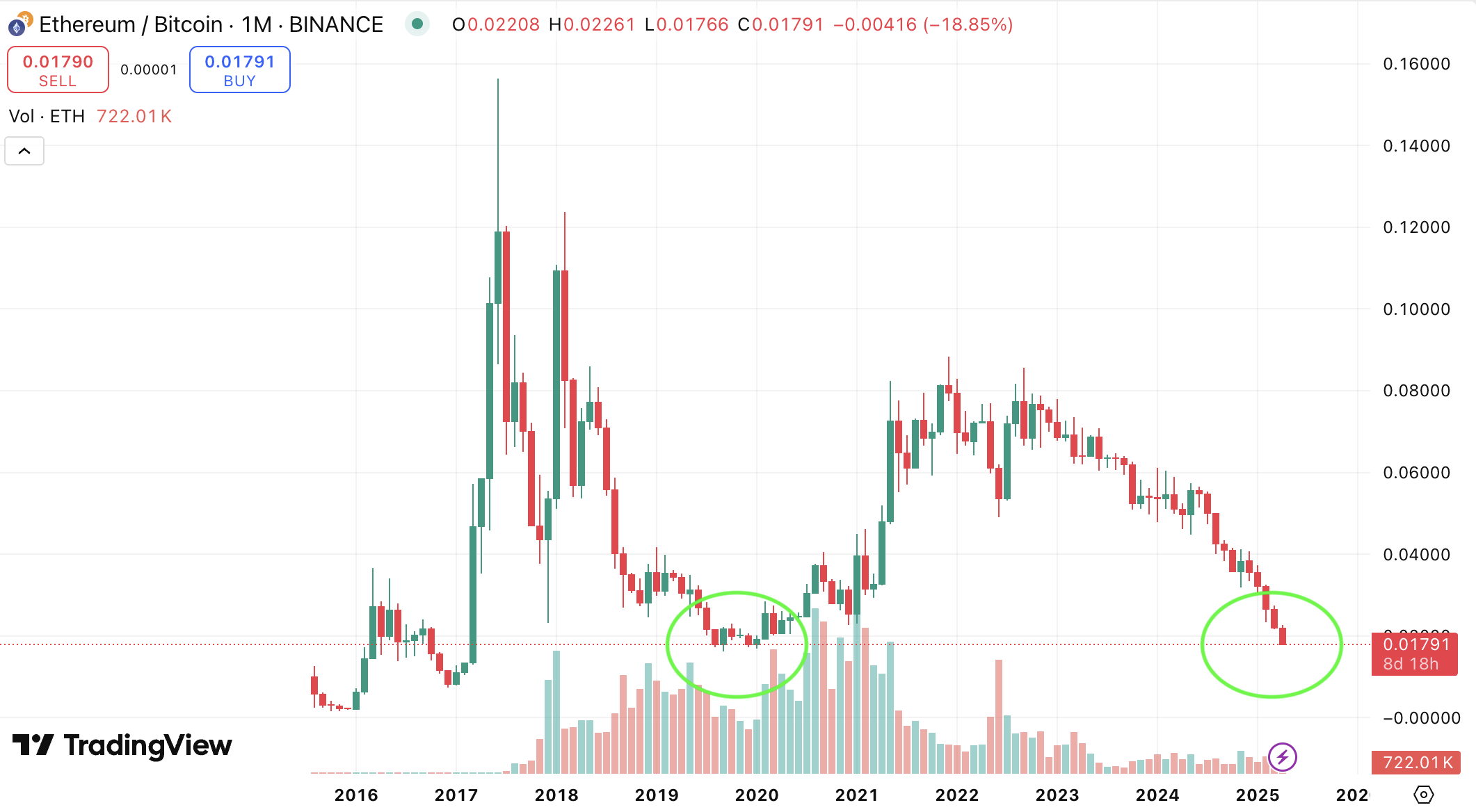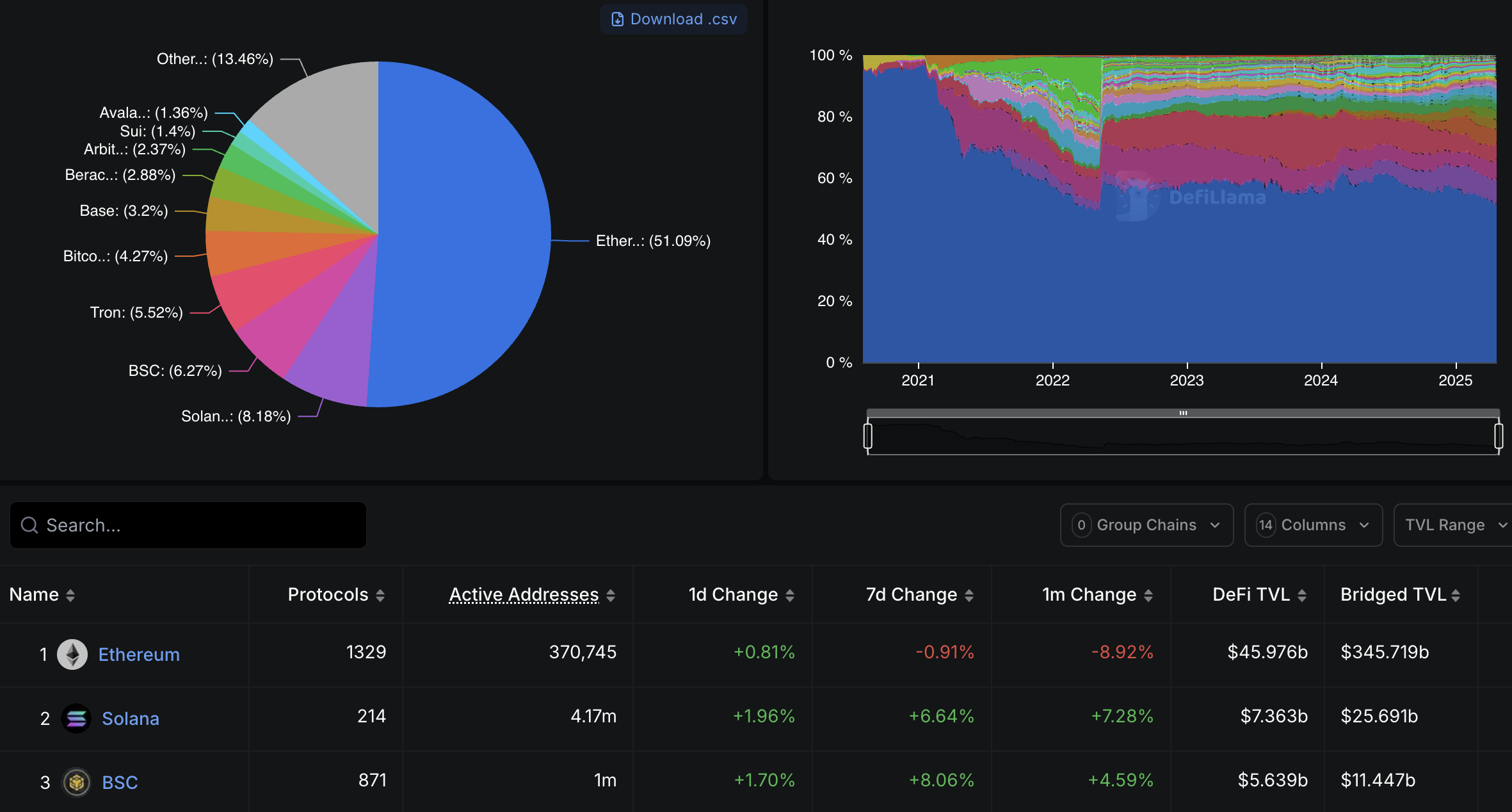| COINOTAG recommends • Exchange signup |
| 💹 Trade with pro tools |
| Fast execution, robust charts, clean risk controls. |
| 👉 Open account → |
| COINOTAG recommends • Exchange signup |
| 🚀 Smooth orders, clear control |
| Advanced order types and market depth in one view. |
| 👉 Create account → |
| COINOTAG recommends • Exchange signup |
| 📈 Clarity in volatile markets |
| Plan entries & exits, manage positions with discipline. |
| 👉 Sign up → |
| COINOTAG recommends • Exchange signup |
| ⚡ Speed, depth, reliability |
| Execute confidently when timing matters. |
| 👉 Open account → |
| COINOTAG recommends • Exchange signup |
| 🧭 A focused workflow for traders |
| Alerts, watchlists, and a repeatable process. |
| 👉 Get started → |
| COINOTAG recommends • Exchange signup |
| ✅ Data‑driven decisions |
| Focus on process—not noise. |
| 👉 Sign up → |
-
The Ethereum market faces unprecedented pressure as the ETH/BTC ratio plummets to 0.01791, the lowest since 2020, largely due to massive whale sell-offs.
-
Notable transactions from major players like Galaxy Digital, Paradigm, and the Ethereum Foundation have taken place, signaling a pivotal shift in market dynamics.
-
As per insights from COINOTAG, low staking rates and increasing Bitcoin dominance exacerbate the situation for Ethereum, prompting concerns among investors.
Ethereum’s ETH/BTC ratio has hit a historic low amidst significant whale activity, raising concerns over market sentiment and investor confidence in ETH.
Whale Activity: The Catalyst for ETH’s Decline
The latest movements in the Ethereum market underscore a **critical moment for ETH** as the continued sell-off from prominent whales contributes to the declining ETH/BTC ratio. Major players like Galaxy Digital have recently transferred a staggering amount of ETH to exchanges, raising questions about the future direction of Ethereum.
Impact of Institutional Selling on Price Dynamics
On April 22, 2025, data from OnchainDataNerd highlighted that Galaxy Digital moved another 5,000 ETH (approximately $8.11 million) to Binance. This was not an isolated incident; earlier in the week, Galaxy had already shifted almost $100 million in ETH, igniting conversations around the intention behind these trades. Furthermore, Paradigm’s transaction of 5,500 ETH to Anchorage Digital only adds to the concerns that large institutions may be distancing themselves from the Ethereum market.
Market Sentiment: A Shift Towards Bitcoin
The decline of the ETH/BTC ratio to 0.01791 signals troubling times for Ethereum as it depreciates in value against Bitcoin. With Bitcoin nearing significant price milestones, including approaching the $90,000 mark, many investors are realigning their portfolios towards BTC, thus intensifying downward pressure on ETH. Currently trading at $1,574, the 2.5% decline over the last 24 hours might spur further profit-taking, placing ETH at a competitive disadvantage.
| COINOTAG recommends • Professional traders group |
| 💎 Join a professional trading community |
| Work with senior traders, research‑backed setups, and risk‑first frameworks. |
| 👉 Join the group → |
| COINOTAG recommends • Professional traders group |
| 📊 Transparent performance, real process |
| Spot strategies with documented months of triple‑digit runs during strong trends; futures plans use defined R:R and sizing. |
| 👉 Get access → |
| COINOTAG recommends • Professional traders group |
| 🧭 Research → Plan → Execute |
| Daily levels, watchlists, and post‑trade reviews to build consistency. |
| 👉 Join now → |
| COINOTAG recommends • Professional traders group |
| 🛡️ Risk comes first |
| Sizing methods, invalidation rules, and R‑multiples baked into every plan. |
| 👉 Start today → |
| COINOTAG recommends • Professional traders group |
| 🧠 Learn the “why” behind each trade |
| Live breakdowns, playbooks, and framework‑first education. |
| 👉 Join the group → |
| COINOTAG recommends • Professional traders group |
| 🚀 Insider • APEX • INNER CIRCLE |
| Choose the depth you need—tools, coaching, and member rooms. |
| 👉 Explore tiers → |

The persistent selling from whales exacerbates the concerns of market participants, with the Ethereum Foundation’s history of liquidating substantial ETH holdings further amplifying price volatility questions. Considering the current staking ratio of ETH, which stands at a mere 28%, investor confidence is likely to wane, especially given that competitors like Solana exhibit higher staking figures.
| COINOTAG recommends • Exchange signup |
| 📈 Clear interface, precise orders |
| Sharp entries & exits with actionable alerts. |
| 👉 Create free account → |
| COINOTAG recommends • Exchange signup |
| 🧠 Smarter tools. Better decisions. |
| Depth analytics and risk features in one view. |
| 👉 Sign up → |
| COINOTAG recommends • Exchange signup |
| 🎯 Take control of entries & exits |
| Set alerts, define stops, execute consistently. |
| 👉 Open account → |
| COINOTAG recommends • Exchange signup |
| 🛠️ From idea to execution |
| Turn setups into plans with practical order types. |
| 👉 Join now → |
| COINOTAG recommends • Exchange signup |
| 📋 Trade your plan |
| Watchlists and routing that support focus. |
| 👉 Get started → |
| COINOTAG recommends • Exchange signup |
| 📊 Precision without the noise |
| Data‑first workflows for active traders. |
| 👉 Sign up → |
Ethereum’s Resilience: Future Prospects Amidst Decline
Despite the overwhelming selling pressure, some analysts remain cautiously optimistic about Ethereum’s long-term potential. Recognized as the leading platform for decentralized finance (DeFi) and NFTs, with a total value locked (TVL) exceeding $45 billion as per DefiLlama, Ethereum retains significant market relevance.

| COINOTAG recommends • Traders club |
| ⚡ Futures with discipline |
| Defined R:R, pre‑set invalidation, execution checklists. |
| 👉 Join the club → |
| COINOTAG recommends • Traders club |
| 🎯 Spot strategies that compound |
| Momentum & accumulation frameworks managed with clear risk. |
| 👉 Get access → |
| COINOTAG recommends • Traders club |
| 🏛️ APEX tier for serious traders |
| Deep dives, analyst Q&A, and accountability sprints. |
| 👉 Explore APEX → |
| COINOTAG recommends • Traders club |
| 📈 Real‑time market structure |
| Key levels, liquidity zones, and actionable context. |
| 👉 Join now → |
| COINOTAG recommends • Traders club |
| 🔔 Smart alerts, not noise |
| Context‑rich notifications tied to plans and risk—never hype. |
| 👉 Get access → |
| COINOTAG recommends • Traders club |
| 🤝 Peer review & coaching |
| Hands‑on feedback that sharpens execution and risk control. |
| 👉 Join the club → |
Continued development through upgrades like Ethereum 2.0 promises to enhance network efficiency and incentivize further investment. Still, short-term traders and investors should approach the market with caution. If whale sell-offs continue, the risk of a deeper decline looms large, particularly as short-term indicators show no sign of recovery for the ETH/BTC ratio.
Conclusion
The ongoing shifts in the Ethereum ecosystem highlight a **pivotal moment** for investors and stakeholders. While Ethereum maintains a leading position in the blockchain landscape, the implications of current whale activity and market sentiment must be closely monitored. As the situation develops, the focus will remain on addressing selling pressures and fostering a renewed sense of stability within the ETH market.
| COINOTAG recommends • Members‑only research |
| 📌 Curated setups, clearly explained |
| Entry, invalidation, targets, and R:R defined before execution. |
| 👉 Get access → |
| COINOTAG recommends • Members‑only research |
| 🧠 Data‑led decision making |
| Technical + flow + context synthesized into actionable plans. |
| 👉 Join now → |
| COINOTAG recommends • Members‑only research |
| 🧱 Consistency over hype |
| Repeatable rules, realistic expectations, and a calmer mindset. |
| 👉 Get access → |
| COINOTAG recommends • Members‑only research |
| 🕒 Patience is an edge |
| Wait for confirmation and manage risk with checklists. |
| 👉 Join now → |
| COINOTAG recommends • Members‑only research |
| 💼 Professional mentorship |
| Guidance from seasoned traders and structured feedback loops. |
| 👉 Get access → |
| COINOTAG recommends • Members‑only research |
| 🧮 Track • Review • Improve |
| Documented PnL tracking and post‑mortems to accelerate learning. |
| 👉 Join now → |








